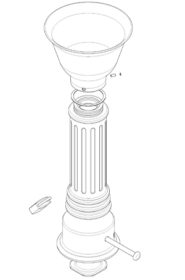Installing Removable Planter Bollards using Anchor Castings in New Concrete
Reliance Foundry’s planter bollards can be made removable with removable mounts using anchor castings. Then, a planter bollard can be removed by simply unfastening a padlock and removing a pin that runs through the center of the bollard’s base. This installation method allows for the convenience of removable bollards to be combined with the aesthetics of planter bollards.
With this installation method, the bollard is intended to act solely as a visual traffic deterrent to restrict or limit access to particular areas. The bollard will offer little impact resistance.
PARTS LIST
|
# |
PART |
QTY |
|---|---|---|
|
1 |
Bollard Base |
1 |
|
2 |
Planter Cap |
1 |
|
3 |
R7500 Anchor Casting 1" |
1 |
|
4 |
R7500 Removable Mount 1" |
1 |
|
5 |
Washer 1" OD 2" Thick 1/8" |
1 |
|
6 |
Hex Bolt 1" x 1 1/2" – requires 1 1/2" wrench |
1 |
|
7 |
Hexagon Socket Set Screw 3/8" x 3/4" – requires 3/16" hex key |
3 |
|
8 |
Polyethylene Plug 3/8" |
3 |
|
9 |
R7500 Lock Pin 3/4" X 10" |
1 |
|
10 |
Gasket (Included) |
1 |
|
11 |
Optional Padlock (Brass or Stainless Steel) |
1 |
INSTALLATION EQUIPMENT
|
Auger |
Chalk/Marker |
|
Dirt Tamper |
Measuring Tape |
|
Level |
1-1/2" Wrench |
|
3/16" Hex Key |
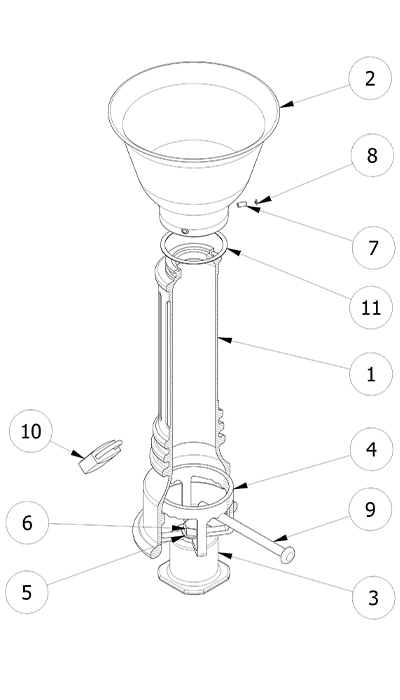
NOTE
- To protect the finish, keep bollards in original packaging until the exact moment of installation.
- Handle with care to avoid scratching or damaging bollard surfaces as abrasions will lead to rust.
- Once scratched, bollards cannot be repaired to original form without re-finishing the entire surface.
Before installation
Study the site plans
Site plans are generally created by the architect of the project.
The architect will mark the intended location of each bollard on the plan.
Ensure that the plan coincides with the site and familiarize yourself with the intended arrangement of the bollards.
Check for hazards
Always check for hazards such as water pipes, gas lines, and underground wiring before digging.
Prepare the site for concrete
Please consult your local Building Code Department to determine the recommended digging depth below the frost line in your area. Choose this or 12", whichever is greater. Then add a minimum 6" for holding the drain rock1. This is your total digging depth.
Note: The diameter of the hole differs based on the bollard model. Refer to product drawings to determine specific measurements.
Note: If the recommended digging depth below the frost line is greater than 12", be sure to provide adequate drainage by piping through the concrete and connecting to the drain rock layer underneath.
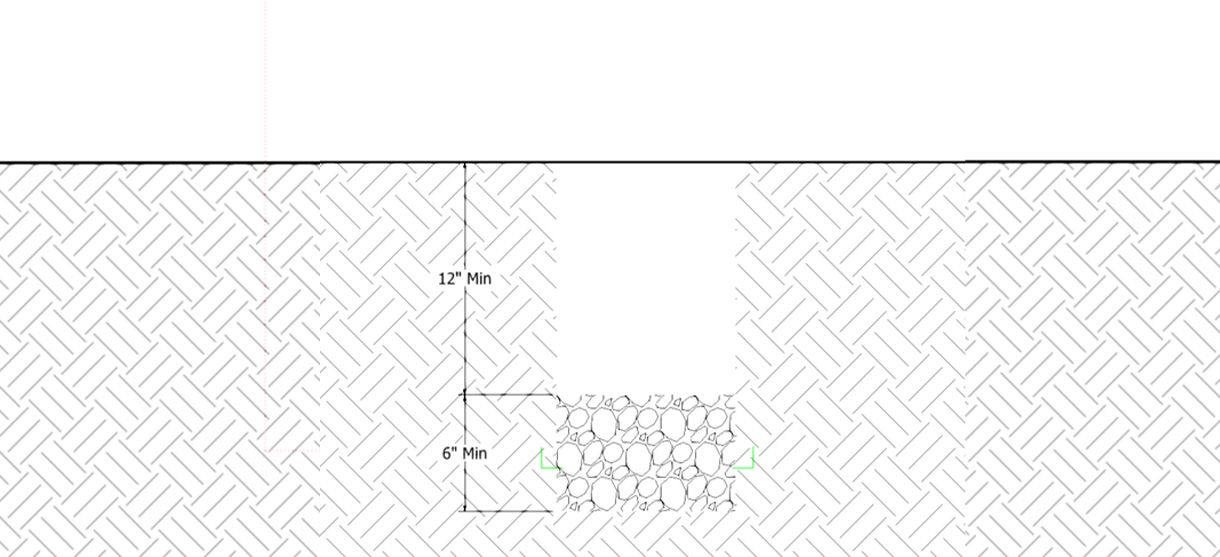
Dig the site
Center the auger on the installation mark and bore a hole to the required depth and diameter.
Ensure the area is properly formed to create a perimeter that will hold wet concrete.
Use a dirt tamper2 to compact the soil below the intended surface.
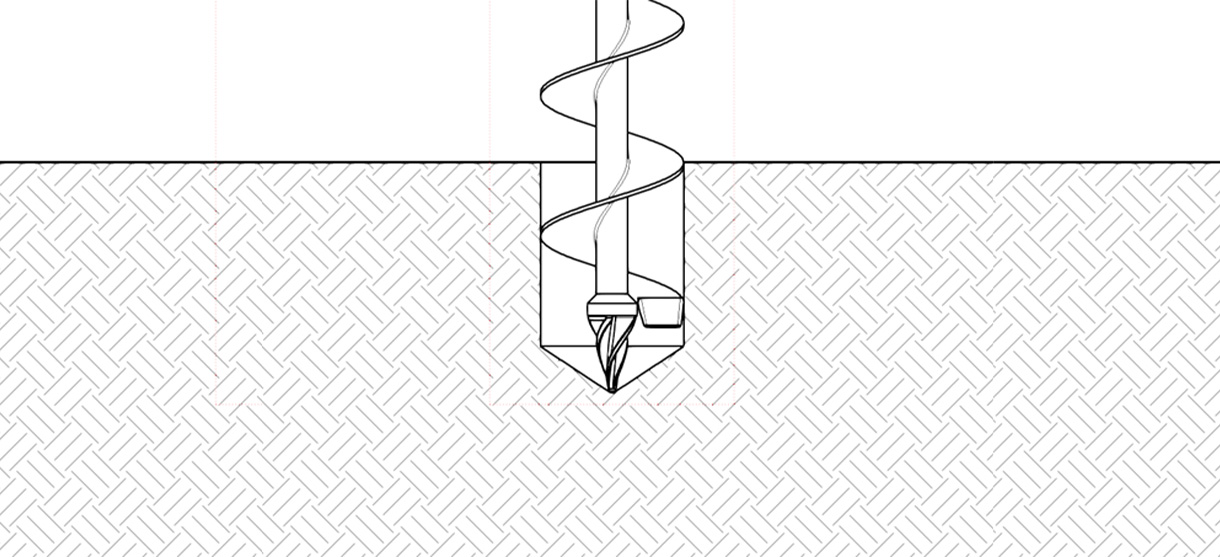
Add the drain rock
Add the drain rock to the installation site.
Prepare the anchor casting for designated location
If the surrounding area is dusty, cover the bottom hole of the anchor casting with duct tape to prevent debris from entering the threaded area. The top hole should already be covered with the plug (A).
Place the anchor casting in designated location and ensure that the top of the casting is flush with the finished surface of the concrete grade (the anchor casting is 4" high).
The top of the anchor casting must be level.
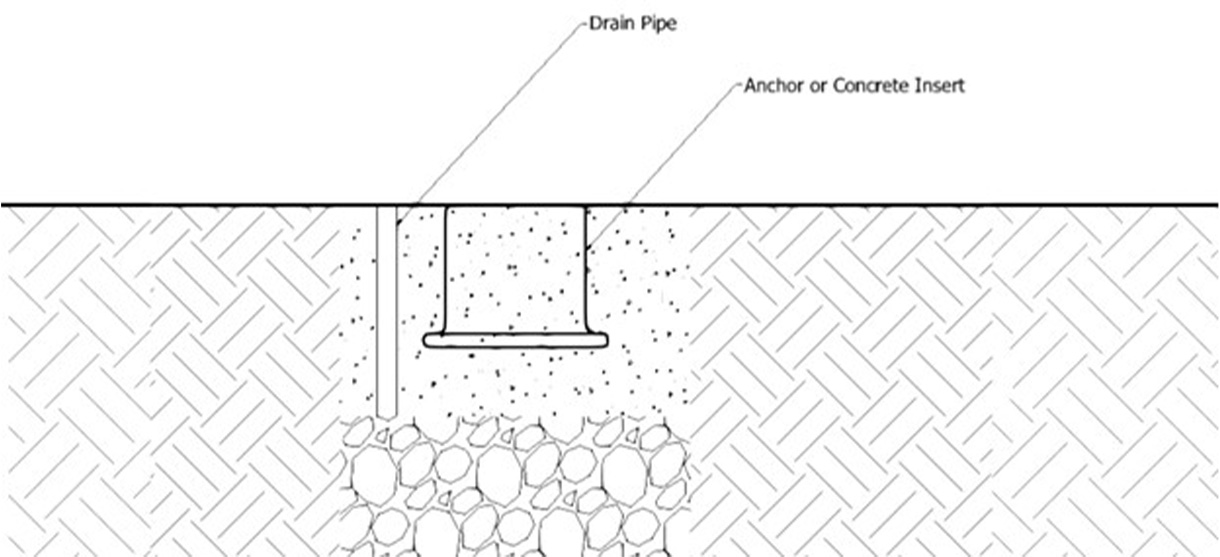
Note: If the recommended digging depth below the frost line is greater than the depth of the receiver, be sure to provide adequate drainage by piping through the concrete and connecting to the drain rock layer underneath.
Pour the concrete
Mix and pour the concrete
Ensure that the proper ratio of water and concrete mix is used—the concrete should have a similar texture to moldable clay.
Pour the concrete evenly, ensuring surface is level, and avoid disrupting the anchor casting.
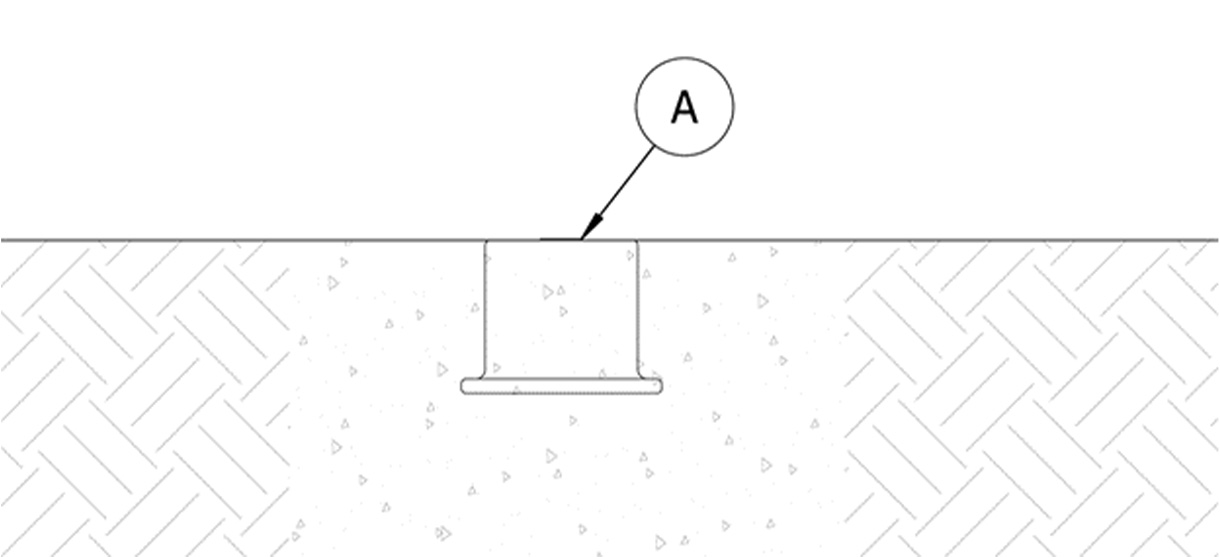
Allow the concrete to cure
A minimum of 2–3 days should be given for concrete to cure before beginning construction projects on new concrete surfaces.
Note: Moisture in the environment and cool temperatures can significantly slow the process
Secure the bollard
Set the removable mount on top of the anchor casting
Remove the plug (A) from the top hole of the anchor casting.
Place the mount on top of the anchor casting so that the center holes line up. Place the washer over top of the center hole. Insert the 1" bolt and use a wrench to tighten until the mount is secure.
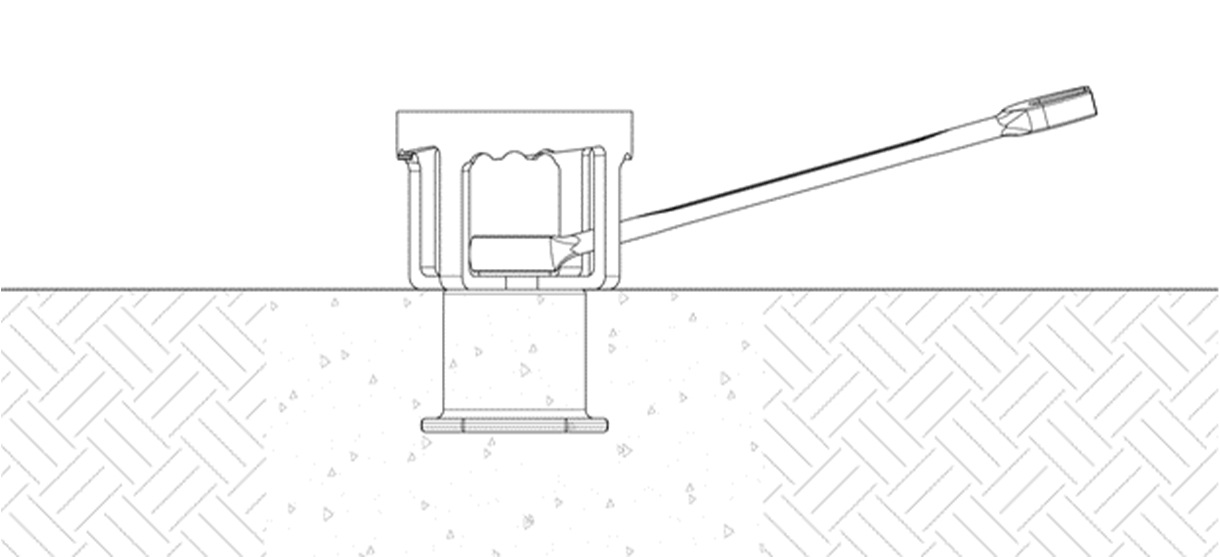
Set the bollard over the removable mount
Keep the bollard in its protective packaging. When ready to install, remove the bollard’s protective packaging.
Set the bollard base upright and place over the mount.
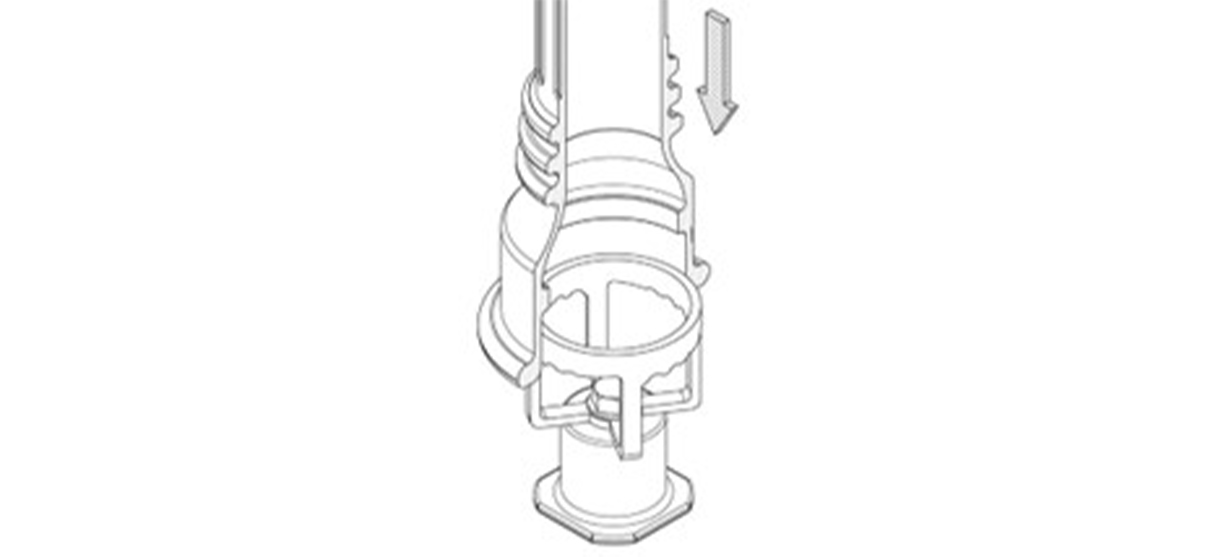
Insert the lock pin
Insert the lock pin through the holes of the bollard base. Twist the bollard in a clockwise motion to secure into position. Fasten the padlock.
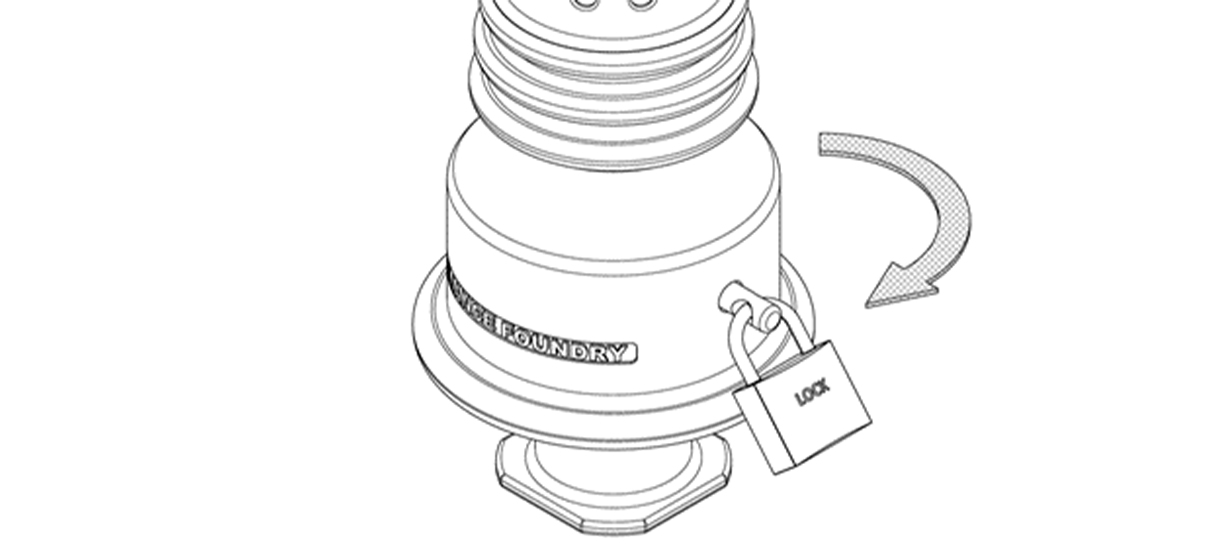
Secure the bollard cap
Remove planter cap from its packaging.
Place the included gasket on top of the base.
Place the cap on the top of the shaft of the bollard.
Secure and align the cap to the bollard base with the three set screws. Tighten in equal amounts to ensure that the cap remains centered.
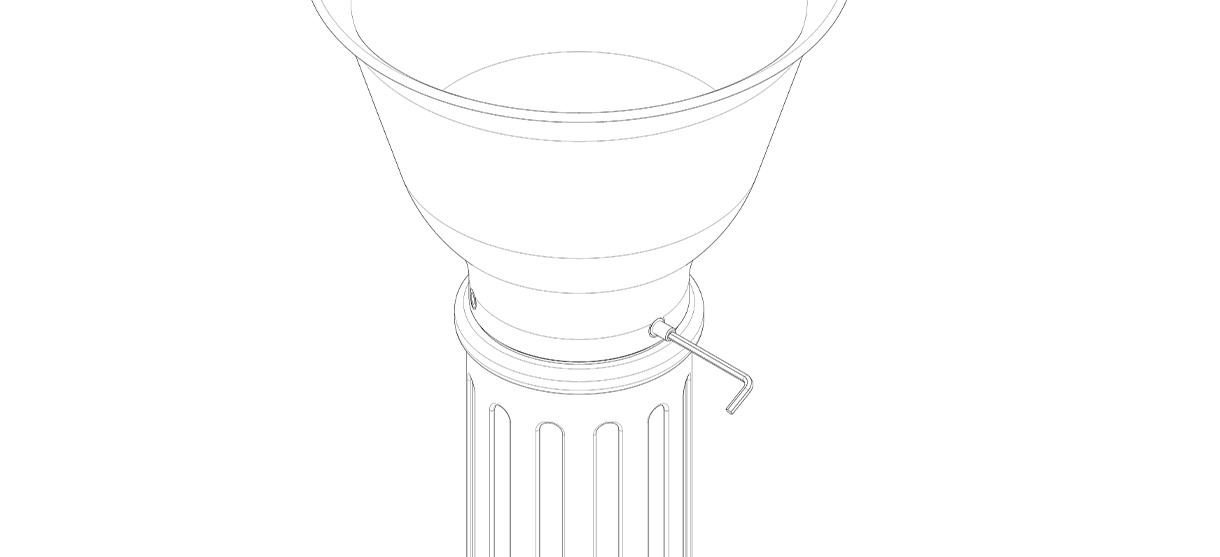
Place the plastic plugs (B) over the set screws.
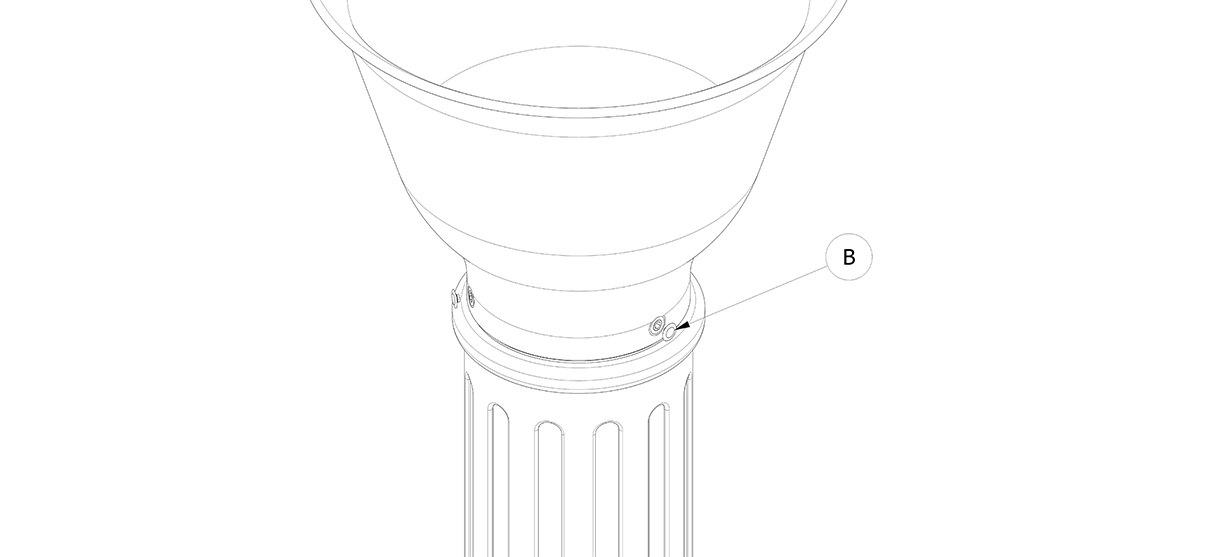
Note: The planter cap can remain intact when replacing or removing bollards in the future.
Care and maintenance
Reliance Foundry manufactures its products to the highest design standards to ensure their durability. In most North American environments, routine inspections and cleaning will ensure that bollards retain their aesthetic appeal. Proper care and maintenance are required to maintain the finish and ensure a full service life.
1. Recommended depth for drain rock is a minimum of 6". Depth will also depend on local soil conditions, weather conditions, and engineering requirements.
2. Dirt tamping is not required if working on undisturbed soil.
